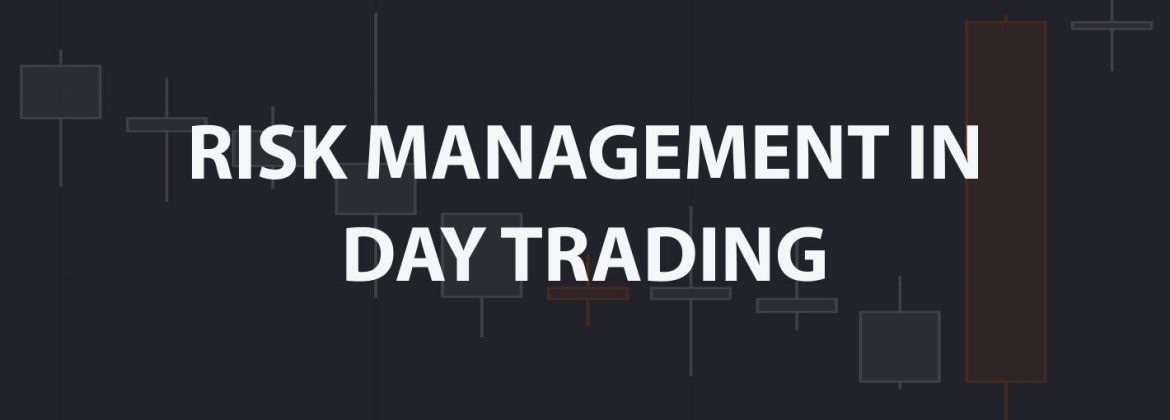Book Your Classes Today!
Risk Management in Day Trading
- Home
- Risk Management in Day Trading

Risk management in trading, especially in day trading, is a vital tool for traders as it helps them navigate unpredictable financial landscapes. Day trading, a strategy that involves buying and selling financial assets within the same day, offers the allure of quick gains. However, it comes with heightened risks due to its fast-paced and speculative nature.
In this FXOpen article, we’ll explore the risks associated with day trading and provide key points of risk management in trading futures, stocks, currencies, and other financial instruments.
Key Steps for Risk Management in Day Trading
Below you will find the key steps traders may consider before building risk management strategies for day trading.
Recognising the Unique Risks of Day Trading
Day trading is a strategy whereby individuals buy and sell financial assets within the same day, with the goal of profiting from short-term price movements. It is a high-risk endeavour where rapid price swings demand quick reactions. Increased volatility can offer profit opportunities but also lead to substantial losses. The emotional stress associated with risk management in day trading is a constant companion for day traders, as they have to make quick decisions.
To better understand why day trading requires specific risk management techniques, let’s compare it to the swing strategy. Day traders aim for quick trades with small profit targets and tight stop losses to exploit minor price changes, reducing exposure to market swings but requiring precision. Swing traders target larger price swings over a longer period, allowing for wider stop losses, necessitating navigating longer-term trends and fluctuations with different risk profiles.
Defining Risk Tolerance and Goals
To build a strong risk management foundation, traders need to align risk tolerance with their goals and approach. Everyone’s comfort level with risk is unique, so ensure that your approach matches your risk tolerance to avoid stress and financial strain. Setting clear, realistic trading goals is crucial for effective risk management. These goals guide your decisions, helping you determine acceptable risk levels and potential rewards.
Quick Adaptation and Emotional Control
Trading demands constant vigilance as markets evolve rapidly. Traders need to adapt swiftly to shifts in sentiment, unexpected events, or technical factors. Experience helps traders recognise these changes and adjust positions. Staying informed and learning are vital in day trading.
Managing emotions is crucial; strategies include routine, mindfulness, and emotional discipline to stick to plans and avoid impulsivity. Building emotional resilience is essential for long-term success.
Risk Management Techniques
Here are the most common risk management strategies day traders use when placing trades.
Limiting the Number of Trades
Overtrading occurs when traders execute excessive trades, often due to impulsive decisions or the fear of missing out on opportunities. To mitigate this risk, day traders set daily trade limits, imposing discipline on their trading activities.
Focusing on high-probability setups and adhering to a predetermined plan can help enhance risk-adjusted returns. By limiting the number of trades and prioritising quality over quantity, day traders can maintain better control over their risk exposure.
Tight Position Sizing and Stop-Loss Orders
Using small position sizes allows traders to limit losses and protect capital. Stop-loss orders prevent emotional decision-making and limit risks in unfavourable market conditions by automatically closing trades when preset price levels are reached. They include hard stops at fixed prices and trailing stops that adjust with the market. Setting stop-loss levels requires participants to consider market volatility and technical analysis to balance capital protection and trade flexibility.
How to Manage Risk in Volatile Markets
One effective strategy for day traders is the 2% rule, which limits the maximum risk exposure on any single trade to a predefined percentage of the trading capital.
Here’s an example of how the 2% rule works for a day trader in the volatile forex market:
Determine Your Trading Capital: Let’s say you have an account with $10,000 as your capital.
Set a Maximum Loss Per Trade: Under the 2% rule, you decide that you can afford a maximum loss of 2% of your capital on any single trade.
Calculate the Dollar Amount at Risk: Calculate 2% of your capital to determine the maximum amount you can accept as a loss on a trade. In this case, it’s 0.02 x $10,000 = $200.
Select a Forex Pair and Entry Point: You decide to trade the EUR/USD currency pair and identify an entry point at 1.2000.
Set a Stop-Loss Order: Based on your analysis and risk tolerance, you set a stop-loss order at 1.1980. This means you accept a loss of 20 pips (0.0020) on this trade.
Calculate Position Size: To ensure you’re only risking $200 (2% of your capital) with a 20-pip stop-loss, you need to calculate the position size. In a standard lot of the EUR/USD pair, 1 pip costs $10, so 20 pips will cost $200. This means that you can use leverage and trade one standard lot.
By adhering to the 2% rule, day traders limit their risk exposure on each trade, ensuring that no single trade can substantially deplete their capital. However, it’s crucial to note that while the 2% rule provides risk protection, it doesn’t guarantee profitability. Successful day trading also requires effective analysis, strategies, and discipline. Additionally, traders should consider transaction costs, slippage, and market conditions.
To test this example of a risk management strategy, you can open a live or demo account on the TickTrader platform.
Conclusion
As mentioned above, it’s crucial to prioritise discipline, maintain a clear trading plan, and continually refine your risk management skills. With these principles in mind, day traders can navigate the turbulent waters of the market and protect their capital while striving for success. When you feel comfortable with your approach, you may open an FXOpen account and trade on a variety of financial instruments.

Leave A Comment